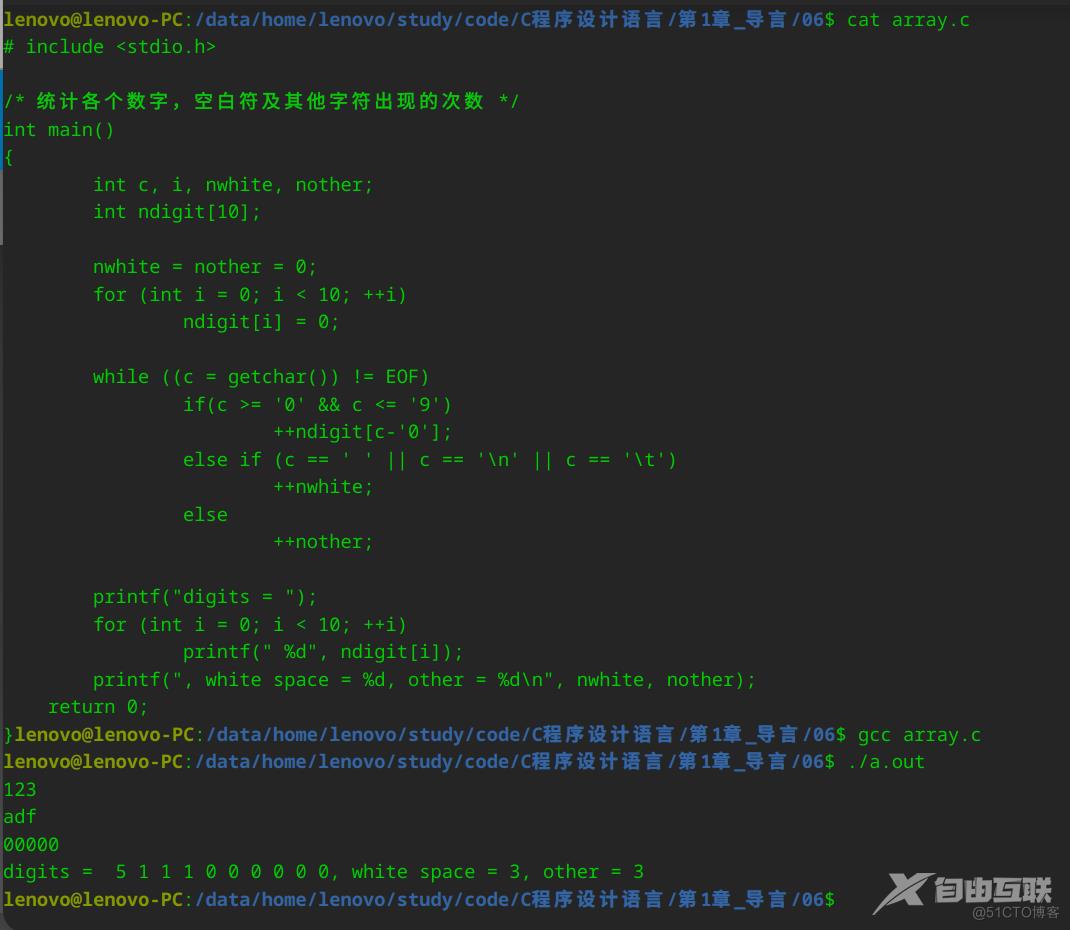第1章 导言-06 1.6 数组 // 所有的输入字符可以分成12类,因此可以用一个数组存放各个数字出现的次数,这样比使用10个独立的变量更方便。# include stdio.h/* 统计各个数字,空白符及其他
第1章 导言 -06
1.6 数组
// 所有的输入字符可以分成12类,因此可以用一个数组存放各个数字出现的次数,这样比使用10个独立的变量更方便。
# include <stdio.h>
/* 统计各个数字,空白符及其他字符出现的次数 */
int main()
{
int c, i, nwhite, nother;
int ndigit[10];
nwhite = nother = 0;
for (int i = 0; i < 10; ++i)
ndigit[i] = 0;
while ((c = getchar()) != EOF)
if(c >= '0' && c <= '9')
++ndigit[c-'0'];
else if (c == ' ' || c == '\n' || c == '\t')
++nwhite;
else
++nother;
printf("digits = ");
for (int i = 0; i < 10; ++i)
printf(" %d", ndigit[i]);
printf(", white space = %d, other = %d\n", nwhite, nother);
return 0;
}
// 将变量 ndigit 声明为由10个整型数构成的数组。
int ndigit[10];
// 判断一个字符是数字、空白符还是其他字符的功能可以由下列语句序列完成
if(c >= '0' && c <= '9')
++ndigit[c-'0'];
else if (c == ' ' || c == '\n' || c == '\t')
++nwhite;
else
++nother;

